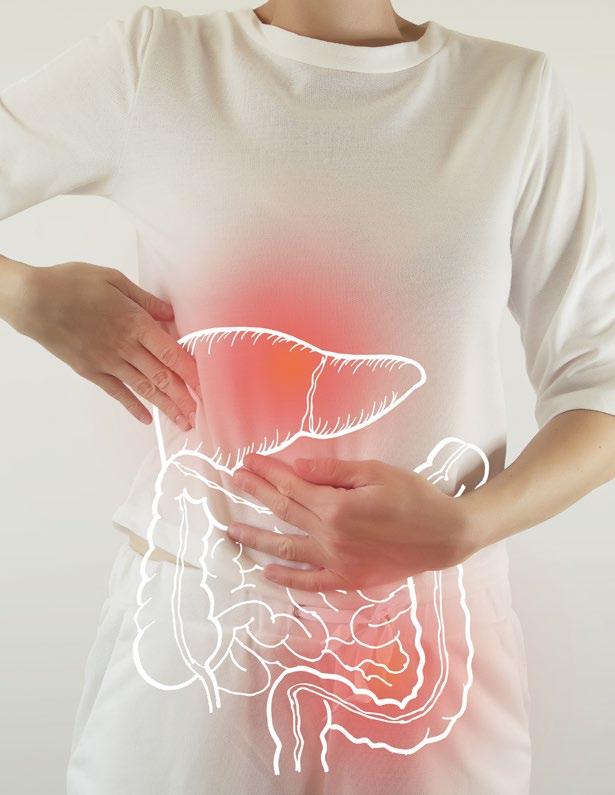
17 minute read
Why We Need Fat 102 Carnivore Journeys
Foreign sugars, glycans from plants, and other microbes ( bacteria/yeast /viruses ) cause inflammation and are responsible for most diseases.
The Glycobiome: Our Body’s Sugar Code
WHAT IS THE GLYCOBIOME & WHY IT’S IMPORTANT TO YOUR HEALTH
Inside our bodies simple sugar molecules connect to create powerful structures that have only recently been linked to various health problems like cancer, aging, and autoimmune diseases.These long sugar chains that cover each of our cells are called glycans, and researchers believe that creating a map of their location and structure has the potential to help doctors diagnose and treat a variety of diseases. These glycans are part of the human glycobiome – the entire collection of sugars within our body.
This cellular “sugar coating” has been a mystery until recently when researchers began to catalog the hundreds of thousands of sugars and their locations on various cell types, with the goal of using this information to tailor medical therapies to each individual.
Glycans - are simple and complex sugars that bind to proteins and lipids (glycosylation) to create proper functionality.
Glycosylation – the normal binding of a glycan (sugar) to a protein to make functional. WHAT DO GLYCANS DO?
The main job of glycans is to influence the proteins and fats that sit on the surface of our cells. Together, they create a thick sugar coat around the cell. You can think of the surface of a cell as soil and the glycans are like the trees and plants that bring color and identity to the cell. If you were able to see a cell with your naked eye, it would look very fuzzy.
Scientists predict that in the near future, we’ll use glycans to predict individual risk for certain diseases (the same way we use genes today). Along with DNA, proteins, and fats, glycans are one of the four major macromolecules essential for life. Of these four, glycans are the final decision-maker for how our cells behave. Glycans have the ability to change how our cells respond to stimuli. For example, if you alter a few glycans on the outside of a cell, it might trigger that cell to move to a different location within the body.
Glycobiome alterations can be specifically tied to particular diseases. Also, biological processes like aging are linked to inflammation in our glycobime. Researchers don’t yet know whether reversing these changes will allow us to prevent certain diseases or slow the aging process.
FRIEND OR FOE?
Every single cell in the human body is covered with a collection of glycans which are assembled using various simple sugars like glucose, mannose, galactose, sialic acid, glucosamine and fructose as building blocks. The glycobiome of a particular cell reflects its unique gene expression pattern. It is how cells know YOU are YOU! By sensing the type of sugar coat present, our immune cells are able to identify other cells as friend or foe. This is because bacteria have sugars on their surfaces that are never seen on human cells – the pathogen’s sugars are sensed by the immune system which allow it to identify the bacteria as ‘foreign.’
The mucosa-associated microbes are particularly important for nutrient exchange, communication with the host, development of the immune system, and resistance against invading pathogens.
The glycobiome is how the body interacts with the environment and how the cells interact with each other.
COLLOQUIAL WAYS TO UNDERSTAND THE GLYCOBIOME:
The sugars we eat or make (and we can make what we need) are used by the body to provide building blocks for glycosylation and glycation, which tell us the following:
1. This is my cell or this is not my cell. The glycobiome of a particular cell reflects its unique gene expression pattern. It is how cells know YOU are YOU! Viruses and bacteria can mimic us so they can invade via glycation and glycosylation.
2. Cells in our immune systems express cell surface associated glycoproteins and glycolipids that together with Glycan
Binding Proteins and other molecules sense environmental changes. In other words . . . is this a safe place to live or not?
3. Donor organs have carbohydrate antigens that trigger immune rejection – therefore understanding the glycome is critical to organ transplant programs
Some Diseases & Disorders we can make sense of when we understand the glycome
• Autoimmunity • Chronic Inflammation
• Rheumatoid Arthritis
• Inflammatory Bowel Disease • Systemic Lupus Erythematosus • Tri Syndrome • Granulomatosis with Polyangiitis • IgA Nephropathy
• Diabetes Mellites
SO, WHAT'S THE STORY ABOUT THE GLYCOBIOME RELATIVE TO CARNIVORE?
Sugars are NOT for nutrition. Their role is regulatory, for signaling, cell-to-cell recognition or rejection, and translation of environmental cues for the organism to flounder or flourish.
A carnivore way of life does not reject a role for sugars, just the need to consume them as a source of energy, like muscle, which your body can use in a pinch for energy, but really you want to consume fats and proteins for that.
The enormous number of glycoconjugates (over 10,000,000,000,000) tells us that, like genetic combinations in DNA, sugars are part of the glycobiome and help animals to survive and prosper … if used appropriately. Eating plants or sugars is not the way to get what you need (your body can provide it), especially considering the secondary deleterious effects of sugar on insulin function.

The Lymphatics
When we talk about health and wellness, people don’t spend much time discussing the lymphatic system, yet it is critical to maintaining optimal health. When we eat fat, it lubricates the lymphatics, and acts like a solvent within the gut to micronize, capture and filter (via the lymph nodes) the waste residue that is brought in through the foods we eat. If we don’t eat fat, many of those antigens get stuck in your gut where they can get into the submucosal layer and interstitial layer of the GI tract leading to inflammation.
While other antigens are delivered to the liver where they interfere with the blood system and pollute every nook and cranny of our bodies. This is an essential part of why a high carbohydrate / low fat diet is deadly. Sugar causes glycation in the lymph system. And since the lymph system does not have smooth muscle to help propel the lymphatic fluid, it relies on the natural flow and pressure of a system that’s intact and lubricated by quality fat. Lymphangitis, lymph node swelling, lymphomas, and leukemia are rampant worldwide because of a low fat / high carb diet filled with excessive frequency, volume, and variety of sugar and carbohydrates.
Amazingly, the entire intrabdominal cavity, the left side of the chest, the left side of the face, and the lower extremities all dump into the thoracic duct. It’s a huge collector of fluid and fat that needs to circulate and return back to your blood system.

Meanwhile, the lymphatic tissue is sent through lymph nodes that employ a filter system and immunologic system with white blood cells that identify the foreign particles and make antibodies against the antigens so that your body can react against them, clean them up, and be ready for the next barrage.
All of the fat in the GI tract goes to the lymphatics and the thoracic duct. The majority of the antigens and dirt dissolve in the fat. When you eat the fat, it lubricates the lymphatics and filters out the pathogens you bring into your body with the food you eat.
Our bodies need natural fats—butter, cream, and animal fats to keep the lymphatic system running strong.

Digestion 101

PROPER DIGESTION AND GUT HEALTH ARE CRITICAL TO YOUR HEALTH & WELLNESS
Over 2,000 years ago Hippocrates said, “All disease begins in the gut.” He also declared “Let food be thy medicine and medicine be thy food.” I see great truth in both statements. Scientists are starting to find hard ev=idence that what we eat has a profound effect upon our overall health—both mentally and physically. I’ve witnessed it personally in myself. Anything good or bad that is happening in the gut creates a domino effect throughout the body, and that includes the mind.
The digestive tract is an amazing machine that allows us to take in complex foods, plant material, animal material, and pretty much any material and break it down into the simple components of simple sugars, amino acids, and fatty acids.
Digestion involves many different organs, and the process begins even before we put anything into our mouths with our salivary glands that are activated by the sight or smell of food and begin to secrete saliva.
Food is manually broken down by our teeth and coated in saliva, which contains enzymes required for carbohydrate digestion.
The mechanical breakdown of food continues in the stomach where it is mixed with gastric juices and transformed into an acidic paste called chyme.
The small intestine then has a dual role as both a digestive organ and gland. The acidic pH of the chyme stimulates the production of messenger hormones that signal the pancreas and gallbladder. The pancreas is signaled to release bicarbonate (i.e., baking soda) to neutralize the chyme and pancreatic juice to help with digestion into the small intestine. The gallbladder is signaled to release bile, which emulsifies and absorbs fat into the lymphatics.
Our bodies take the carbon particles from carbohydrates, break them down in the gut, and takes the micronized carbon particles that have been broken down from complex sugars to simple sugars and passes them in to the hepatic portal system where they’re shuttled off to the liver. In the liver, the sugars are converted to fat via insulin.
Proteins are broken down by enzymes into amino acids and absorbed into the hepatic portal blood flow to the liver and via insulin, converted to sugar and then fats.
The large intestine recycles water, captures any lost nutrients that are still available (with the help of the bowel flora), converts the nutrients to Vitamins K/B1/ B2/B12 and butyric acid (fatty acid), and forms and expels fecal waste.
From the day we are born until the day we die, our bowels are digesting food—mostly carbs. Always exposing our bowels and body to the digestion process and chemicals that feed our cells and nourish our body. Our bowels never get a chance to rest; they never get a chance to heal. They are always inflamed! This is the entry point for most damage and disease.
THE PROCESS OF DIGESTION:
• Creates heat and gas, alcohol and aldehydes (all damaging to the intestinal cells and beyond)
• Creates churning that causes damage to the sensitive epithelial cells via fibers abrasive effects on the interstitial cells.
• Is unrelenting (no rest), meaning damage and repair are continuous causing inflammation that is the leading cause of our digestive disorders and distant cellular damage
• Damages the Teflon coating of the bowels, called the glycocalyx, exposing the epithelial cells to invasion by microbes (bacteria, yeast, viruses) and subsequently transports these microbes to every cell/organ in the body!
• Damages the glycocalyx--mostly from the abrasive nature of food and digestion--the often toxic particles of food (mostly plants with their methods of protection from organisms that eat them --oxylates, phytates, glutens, and others.
The ability to make fat fast and burn it slow allows us to go days and weeks without food. We’re a fatmaking and fat-burning machine. We must convert all fuel (sugar and amino acids) in the liver to fat. Fat is made in the liver via insulin that comes directly from the pancreas. If you don’t have a normally functioning pancreas and liver, you can’t make fat. If you don’t eat fat or make fat, you die.
But if you eat real fat in the form of butter fat, cream fat, or animal fat, it’s able to be absorbed via the chylomicrons that are developed in the GI tract from the secretion of bile into the gut, which is then taken up into the thoracic duct, the lymphatics of the GI tract. The fat helps absorb the dirt and the dust in the bowels, and likely bind the microorganisms in the gut and trap them in the chylomicrons, deliver them to the lymphatics (the thoracic duct), which delivers them to the filter system of the body which are the lymph nodes.
This is the way we capture them in the gut to send them to the thoracic duct/lymphatics to cleanse the real fuel of the body which is fat and deposit it in the adipose tissue of the butt, the belly, the thighs, and the arms and many more internal storage sites. This is the fuel tank for the Ferrari which allows you to go days, weeks, and even months without consuming food.
Ultimately all foods are used toproduce Acetyl CoA, then fat, which is ultimately used to produce ATP. ATP (Adenosine triphosphate) in the mitochondria; which is the necessary source of energy for every cell in our bodies.
Digestion is a parasympathetic process, which means the body must be in a relaxed state in order for things to work properly. This is why the parasympathetic process is also referred to as the body’s “rest and digest” mode, while the sympathetic mode is known as the body’s “fight or flight” mode.
If you’re exercising or stressed, the body de-prioritizes and begins to shut down aspects of digestion in order to provide blood flow to the muscles or other organs that require it more urgently. This is another reason I say, “One meal at night, then rest and digest.” Body Fat Storage Sites
1 2 3 4 5 6
THE GUT
• 70-80% of our immune system resides in the gut. Good gut health is necessary for a healthy immune system.
• If digestion is impaired, our bodies can’t absorb nutrients properly.
• Chronic digestive issues create chronic inflammation and stress, which can wreak havoc on the body and lead to cellular/ organ/hormonal imbalances and disease.
• The gut microbiome synthesizes some short-chain fatty acids, which can be healing, and a number of other key nutrients (including biotin and vitamin
K2).
• The majority of the body’s serotonin (a.k.a. the feel-good hormone) is produced in the gut. This is why the gut is often referred to as “the second brain” and is so intimately linked to mental health.
Stages of Digestion


Intermittent Feasting:
TRUE FASTING: EAT ONCE PER DAY (OR LESS)
Fasting between meals gives your body time to rest and digest, heal and repair, and allows the glucose levels in the bloodstream and throughout the body to go down. Some refer to this as “intermittent fasting”, but I find the term “intermittent feasting” to be more accurate. I believe your best health comes from eating one meal a day in the evening and giving the body time to clear the bowels of food by allowing 12-24 hours between feedings. This is in line with how prehistoric man lived: going for days to weeks without eating, not knowing where or when his next meal was coming, feasting and then fasting, fasting, fasting while on the hunt for food.
Our bodies were not designed to eat 3-5 meals a day with snacks in between like a grazing animal. Eating several meals a day fills the gut with fiber and carbs that ferment and feed the bacteria and yeast causing more disease. The more we eat, the more we fill “the bucket” that is our digestive system. We fuel the fire of inflammation; we fill our intestines, never allowing them to diminish their contents because of the continuous supply of food.
Intermittent feasting allows time for digestion, reduces glucose and insulin levels in the bloodstream, thereby reducing the damage that causes foggy brain, digestive issues, and aches and pains throughout the body. Our bodies are well- designed to go without food, yet most of us consume more calories than we could ever burn through in a day. This adds fat to our bodies. Fat is meant to be there to help ensure our survival during times of famine and drought.
Dr. Jason Fung has a lot of good information on incorporating intermittent fasting into your lifestyle.
“Carbo-caine” When I talk to patients or friends about eating bacon, eggs, butter, and beef and removing carbohydrates and sugar from their diets, most worry they won’t be able to do it. Carbs and sugar have a real grip on most of us, you’re not imagining it. I actually call carbs “carbo-caine”. Like cocaine, they are addictive. Eating carbs affects the pleasure centers in the brain just like a drug. High carb consumption spikes insulin which allows tryptophan to enter the brain and make serotonin, the feel-good neurotransmitter.
Eating carbs quite literally makes us happy, but only temporarily. A steady diet of high carbs and sugar will create a host of problems that affect your daily enjoyment of life and can shorten your lifespan.
LONGER FASTING LEADS TO MORE LASTING!
FEAST FAST
Intermittent Feasting Benefits
While there are likely dozens of health benefits to intermittent feasting, we'd like to highlight a few that are especially important for impacting fertility.
BENEFIT #1: Keeping the Bowels Clear and Cool
Many people do not recognize that in the female body, the bowels sit directly on top of the reproductive organs.
This is problematic as digestion (particularly fermentation if you are eating vegetable products) creates a tremendous amount of heat, and the female reproductive system is fine-tuned to function at a very specific temperature, 98.6. This isn't a problem if we space out meals and limit them to around once a day. But if we are eating 3 meals a day and snacking in between, the ovaries may be operating in elevated temperatures nearly 24/7, which could seriously alter egg quality and other aspects of female reproductive health.
BENEFIT #2: Increases Human Growth Hormone -> Improves Egg & Sperm Quality
We frequently prescribe human growth hormone or recommend supplements designed to increase HGH levels as a way of improving egg quality. But all of that may not be necessary if you're intermittently feasting.
A recent study looking at the effects of IF on 200 people found that fasting for just a 24-hour period increased HGH by 1300% in women and 2000% in men.
BENEFIT #3: Reduces Inflammation
Fasting has been shown in numerous studies to reduce inflammatory activities and reduce chronic inflammation. This gives IF the power to improve nearly every marker of physical and mental health while reducing the risk of disease and infertility.
BENEFIT #4: Improved Blood Sugar, Insulin, and Hormone Levels
It is believed that PCOS, the leading cause of infertility, is largely driven and caused by chronically elevated blood glucose levels which keep insulin levels consistently high and lead to disruption of normal hormone function.
Fasting is the most foolproof way to reduce blood glucose and insulin levels, and reduce the symptoms of metabolic syndrome and PCOS, including ovulatory dysfunction.
Why You Need Extra Salt
Most people eating a keto or carnivore diet need additional salt.

In Dr. Kiltz’s B.E.B.B.I.S. Diet (Bacon, Eggs, Butter, Beef, Ice Cream, Salt), salt is a critical component. Your body uses salt to help regulate fluid balance. As you’re eating fewer processed foods and your body begins to sheds electrolytes and fluids while in ketosis, your body also loses salt. Even transitioning from regular keto to the B.E.B.B.I.S. Diet, you will lose extra water from inflammation.
How do you know you need more salt? Feeling foggy (brain fog) or lethargic, muscle cramps/spasms, headache/dehydration/hungover, dizziness going from sitting to standing are all likely symptoms. The solution is usually more salt. If you add a little more sea salt to your diet and you feel better, then that’s your answer. Often salting your food to taste isn’t enough to compensate for the volume of salt you’ve lost. When more salt doesn’t do the trick, you may need to try adding potassium or magnesium. Soaking in an Epsom Salt bath can also help as you absorb salt’s active ingredients magnesium and sulfate through your skin.
Like red meat, salt has been demonized, but that other white crystalline substance (SUGAR) is a much bigger threat than salt ever was! New studies are showing that salt may not be as damaging to health as previously claimed. There’s growing evidence to suggest that a moderate intake of sodium may have a beneficial role in cardiovascular health, but a potentially more harmful role when intake is very high or very low.
For those who want to go dairy-free, but have difficulty kicking the dairy habit, salt is sometimes one of the problems. There are lots of salty cheeses. If your body is craving salt, it can make removing dairy products more challenging.







